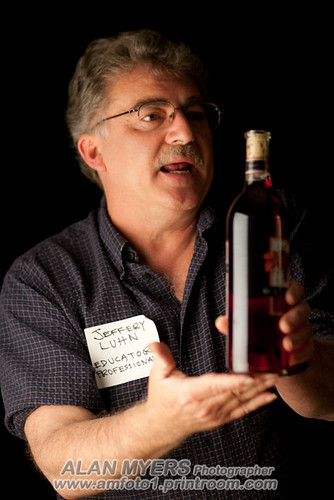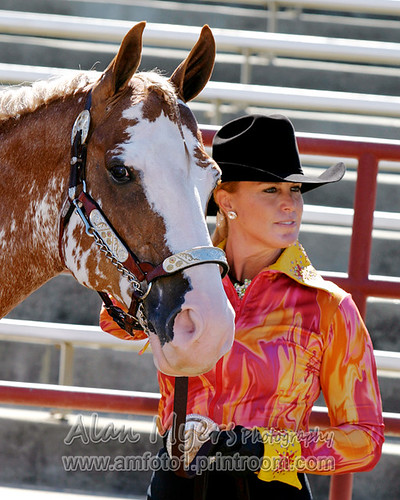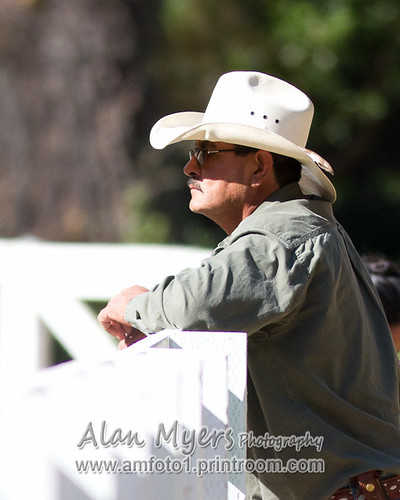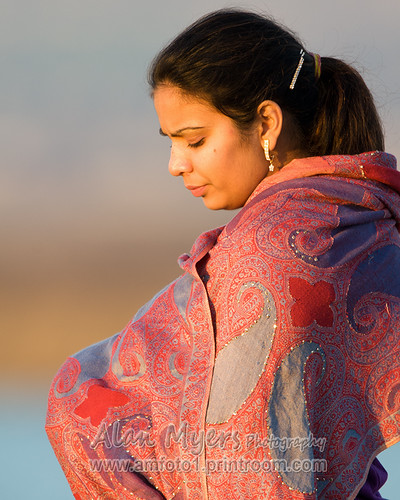Suggestions/opinions on Nikon AF-S VR Micro-NIKKOR 105mm f/2.8G IF-ED Lens
Feb 19, 2019 07:51:45 #
juan_uy wrote:
Hi all, hope you can help me with some suggestions... (show quote)
The 105mm 2.8 Macro will serve you well. Buy it.
Feb 19, 2019 08:15:30 #
Feb 19, 2019 08:22:43 #
juan_uy wrote:
Thanks for chiming in, I will take this in consideration. I hope some day to get the 70-200, but at this moment I should win the lottery first :)
The 80-200 2.8 works on your camera and it’s a great lens. There are several generations of it available used at affordable prices. (Don’t buy the one-ring Zoom/focus model.)
Feb 19, 2019 08:25:58 #
I have the AF "D" version of this lens. That said, my goto 105 macro is an older manual focus model from film days. All of my cameras will meter, if needed, with any of the lenses. You would be hard pressed to differentiate between the results from any "true" macro lens. They all will deliver if you do your part. I own 9 different "true" macro lenses from 55 to 180mm in length, some are AF, others are MF. They span the gauntlet of manufacturers from Nikon, Tamron, Sigma, Vivitar (Kino made) and Lester Dine (again Kino made). That's not even including the bellows, tubes, reversing rings, etc that I also own. As for how to gauge a used lens, that is really done by shooting with it and making sure it operates as it should...
Feb 19, 2019 08:53:22 #
Feb 19, 2019 09:36:42 #
juan_uy wrote:
Thanks for your input!
To save the money I would buy the Tokina. I don't care about resale. FYI...I have a friend who doesn't like the Tokina because of the way you go from auto to manual focus, but I actually prefer it.
Feb 19, 2019 09:42:31 #
One point I'd like to make is to take reviews that claim one lens is superior to another are normally done on an optical bench and real-world shooting can't compare to optical bench test results. Unless there is a considerable difference in the results, one would likely not be able to perceive a difference in their images.
Feb 19, 2019 09:43:53 #
art pear wrote:
To save the money I would buy the Tokina. I don't care about resale. FYI...I have a friend who doesn't like the Tokina because of the way you go from auto to manual focus, but I actually prefer it.
I got to borrow one from a friend for a week.
The manual focus clutch feature was really nice!
Feb 19, 2019 10:01:57 #
NCMtnMan
Loc: N. Fork New River, Ashe Co., NC
I have the Nikkor 105 that I use on my D7200 and love it. I bought mine refurbished from Nikon for not much more than the used one you're looking at.
Feb 19, 2019 10:07:11 #
Dear friends , Nikon 105 mm macro lens is a super lens for macro work.
Normally every lenses are made for specific fields or needs of photography !
So use them accordingly .
Macro Lenses are meant to work for macro photography where corner to corner sharpness is needed.
please do not use macro lenses for other type of photography ; especially for portraiture !
The reason is macro lenses always give flat two dimensional pictures ! For macro , it is ok !
For portraiture it gives lifeless flat pictures .
Now a days , many people are using 90 ~ 105 mm macros for portraiture. They know that lenses with focal length 75 ~ 135 mm are ideal for portrait work. But that are not macro lenses .
That is why the Nikon company introduced two different lenses with same focal lengths !
The 105 mm F 2.8 for macro & 105 mm F 1.4 for portraiture !
CLEAR ?
With regards, Mohandas , Palakkad - 678 544 , Kerala , INDIA .
Normally every lenses are made for specific fields or needs of photography !
So use them accordingly .
Macro Lenses are meant to work for macro photography where corner to corner sharpness is needed.
please do not use macro lenses for other type of photography ; especially for portraiture !
The reason is macro lenses always give flat two dimensional pictures ! For macro , it is ok !
For portraiture it gives lifeless flat pictures .
Now a days , many people are using 90 ~ 105 mm macros for portraiture. They know that lenses with focal length 75 ~ 135 mm are ideal for portrait work. But that are not macro lenses .
That is why the Nikon company introduced two different lenses with same focal lengths !
The 105 mm F 2.8 for macro & 105 mm F 1.4 for portraiture !
CLEAR ?
With regards, Mohandas , Palakkad - 678 544 , Kerala , INDIA .
Feb 19, 2019 10:36:18 #
juan_uy
Loc: Uruguay
mohandas wrote:
Dear friends , Nikon 105 mm macro lens is a super ... (show quote)
Thanks for your insight, and I do understand what you say..........however, I can't afford a separate set of lenses for each type of photography. At least not nowadays, and not while it is just a hobby.
Feb 19, 2019 10:39:36 #
juan_uy
Loc: Uruguay
Thanks to all of you that have given an opinion, as usual UHH community is very helpful!
At this moment I can't find the publication anymore, it may be sketchy or it may have ended. Will keep looking and wait to see if appears again.
If not, I am considering the AF-D version (for around 60% of the price) that would still AF on my D7200, although I would loose VR.
At this moment I can't find the publication anymore, it may be sketchy or it may have ended. Will keep looking and wait to see if appears again.
If not, I am considering the AF-D version (for around 60% of the price) that would still AF on my D7200, although I would loose VR.
Feb 19, 2019 11:46:23 #
amfoto1
Loc: San Jose, Calif. USA
juan_uy wrote:
Thanks!
So if you consider them equals, having to buy only one, the Tokina would be the one, taking in consideration that the new one is less than half the price of the Nikon?
Or you would still consider the Nikon for reliability and/or resale value?
So if you consider them equals, having to buy only one, the Tokina would be the one, taking in consideration that the new one is less than half the price of the Nikon?
Or you would still consider the Nikon for reliability and/or resale value?
Besides their prices, there are differences between the Nikon AF-S VR 105mm Micro lens ($800+ U.S.) and the Tokina 100mm Macro ($350 U.S.)....
One thing you don't have to worry about is image quality. Both are excellent and very sharp for highly detailed macro shots (as are most macro lenses).
The Tokina doesn't have a built in auto focus motor. It relies on a motor in the camera body to auto focus. Since you have a D7200, you'll be fine, since that camera has an in-body focusing motor. However when you go to sell it (if you ever do), users of D3000-series, D5000-series and similar Nikon will not have auto focus with the Tokina lens. Only D7000-series and higher cameras have that in-body motor. This will limit your market to resell the lens, if it ever comes to that.
The AF-S 105mm Micro has no such limitation. It has an in-lens focusing motor, so is able to auto focus on all Nikon cameras.
Another thing is Tokina's rather unusual "focus clutch" mechanism, used to engage or disengage auto focus. The lens' focusing ring slides slightly forward and backward. When it's set to AF, the focus ring does nothing. Manual focusing is completely disengaged. Because of this, you can't use "defocus and refocus" techniques or override AF and fine tune focus, without first switching the lens out of the AF mode with the focus clutch. (This is done to protect the micro motor focus drive, which can be damaged if it's overridden manually.)
The AF-S lens has an ultrasonic focus drive and it's focus ring is fully engaged all the time and it's possible to override AF any time you wish.... and this will do no harm to the focus mechanism of the lens.
In all likelihood, the AF-S drive is faster focusing than the micro motor, too. However, all macro lenses are somewhat slower focusing by design. They use a "long throw" focus that emphasizes precision over speed. This is because depth of field is so shallow at higher magnifications that it makes precise focusing more important. Also, any lens that has to move its focus group all the way from infinity to full 1:1 magnification has to move it's focusing elements quite a bit of distance.
Both lenses have Focus Limiters which can be set to help with focus speed in certain situations. On both they are simple "two-stage" limiters: one setting gives full range which allows full 1:1 magnification, the other limits the lens to less close distances and can help with focus speed.
Yet another difference is that the Tokina is not an Internal Focusing lens. This means it changes length and extends longer as it's focused closer. And, like most non-IF macro lenses, it extends quite a bit! It almost doubles in length. This reduces "working distance" between the front of the lens and the subject a bit.
The AF-S VR 105mm Micro is an Internal Focusing lens. As such, it starts out slightly longer (3.25") than the Tokina (approx. 3"). But the 105mm Micro doesn't increase in length. This allows it to have greater working distance, approx. 6". The Tokina ends up with about 4.5" working distance. (There figures are from Ken Rockwell's reviews, as measured by him. I'm sure they were measured without the lenses' respective hoods in place, which would further reduce working distance.)
Both lenses have very similar Minimum Focus Distance: approx. 12" (which is typical of 1:1 macro lenses in the 90 to 105mm range). However, MFD is not the same as "working distance". MFD is measured from the film/sensor plane of the camera to the subject... which means that part of the camera and the lens itself occupy some of that space. Because the Tokina lens grows longer when focused closer, it takes up more of that space, reducing working distance in comparison to the Nikkor lens.
Something that's often overlooked is that Internal Focusing lenses actually change focal length slightly during focusing. I don't know exactly how this effects the 105mm Micro.... but with my Canon 100mm, which is also an IF lens, the "true" focal length at full 1:1 magnification is closer to 70mm than 100mm. You really don't notice this effect while using IF macro lenses, but it occurs and needs to be mentioned.
Another thing that's probably due to the Nikkor's IF design, it shows some vignetting at certain apertures and distances. More than the Tokina. (See reviews of the lenses on Ken Rockwell's website... he illustrates it with test shots). Of course, vignetting is easily corrected... many cameras can do so automatically and many post-processing software programs have lens profiles that correct it.... or it can be done manually. The vignetting will be considerable less noticeable using either lens on an APS-C camera, anyway. Your D7200 only uses the central portion of the images and crops away the corners where the strongest vignetting occurs.
Of course, the Nikkor 105mm Micro VR also has in-lens images stabilization, which the Tokina lacks. That stabilization would probable be more useful when shooting portraits though. Stabilization is of limited assistance at high magnifications. As you approach full 1:1, you'll find a lot less benefit from it... so still may need something to steady your shots... a tripod or at least a monopod.
Personally I'm not a big fan of using macro lenses for portraiture. For one, f/2.8 isn't all that big an aperture for portrait work and it's the largest aperture most macro lenses boast. Also, macro lenses tend to give a different "look" than portrait lenses... they seem "too sharp" to me. Might be fine for masculine portraits... but most women won't appreciate seeing every fine detail and "flaw" in their portraits.
For convenience, I do carry a fairly compact Tamron SP 60mm f/2 Macro Di II lens (~$500 U.S.) that sometimes doubles for portraiture on my APS-C cameras. But it's f/2 aperture is a stop larger aperture than most macro lenses though (as much as two stops large than some others). That Tamron lens saves a lot of weight and space by essentially taking the place of three other lenses in my camera bag: 100mm macro lens along with 50mm f/1.4 and 85mm f/1.8 portrait lenses. I still use those lenses for those purposes, when I have a portrait or macro session planned. But when I'm out for another type of shoot and am not specifically planning portraits or macro work, but want a capable lens "just in case" I tuck the Tamron in my bag instead.
I wouldn't be too worried about using a 100mm or 105mm focal length for portraiture. I've used longer... sometimes a whole lot longer!
85mm:

70-200mm lens at 93mm:

70-200mm at 160mm:

300mm:

700mm (500mm w/1.4X teleconverter:

All the above were shot with those lenses on APS-C crop sensor cameras, similar to your D7200. I just realized I don't have any portraits done with the Tamron 60mm online. I'll have to look for some or make a point of taking more with it soon (it uses fairly slow micro motor focus drive, like the Tokina... fine for macro and portraits, but not an "action" lens by any means... but, then, no macro lens is very usable for fast action shooting).
Feb 19, 2019 12:39:05 #
I have a Tokina 100 F2.8 macro from it's release. Great macro lens. Did a
lot of research before buying it.Got rid of my previous well known ones.
Dr.AlbertB
lot of research before buying it.Got rid of my previous well known ones.
Dr.AlbertB
Feb 19, 2019 12:45:08 #
juan_uy
Loc: Uruguay
amfoto1 wrote:
Besides their prices, there are differences betwee... (show quote)
Thanks a lot for all your post! And thanks for taking the time to explain everything and give your personal experience also!
I like mostly landscape and travel photography. However, I would like to have a macro lens, and probably a better portrait lens, but not to fully dedicate to these types of photography. Just to use once in a while.
That was why I thought about the 105mm, and because there was a very good price for it.
At the moment that sale is not active anymore (was on a site similar to eBay), but I don't think it was sold. So I will probably wait to is if it appears republished.
The available one at this moment is the AF-D version, that I guess will have slower AF that the AF-S and lacks VR.
I must decide how much I want to try macro. If it would be only for portraits I guess that the 85mm would be better? Although it would be the f1.8 I guess, the f1.4 is out of budget.
If you want to reply, then register here. Registration is free and your account is created instantly, so you can post right away.





